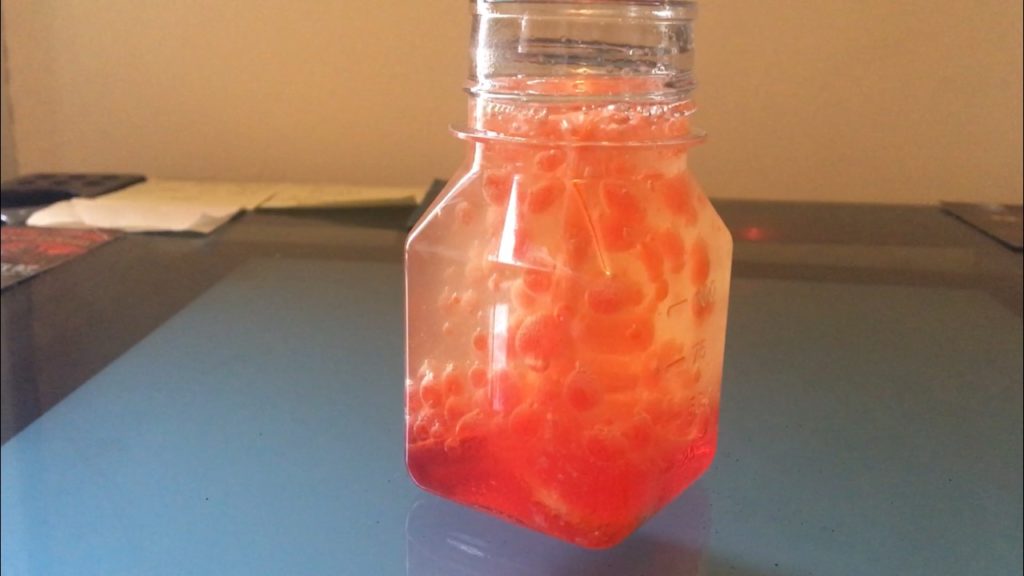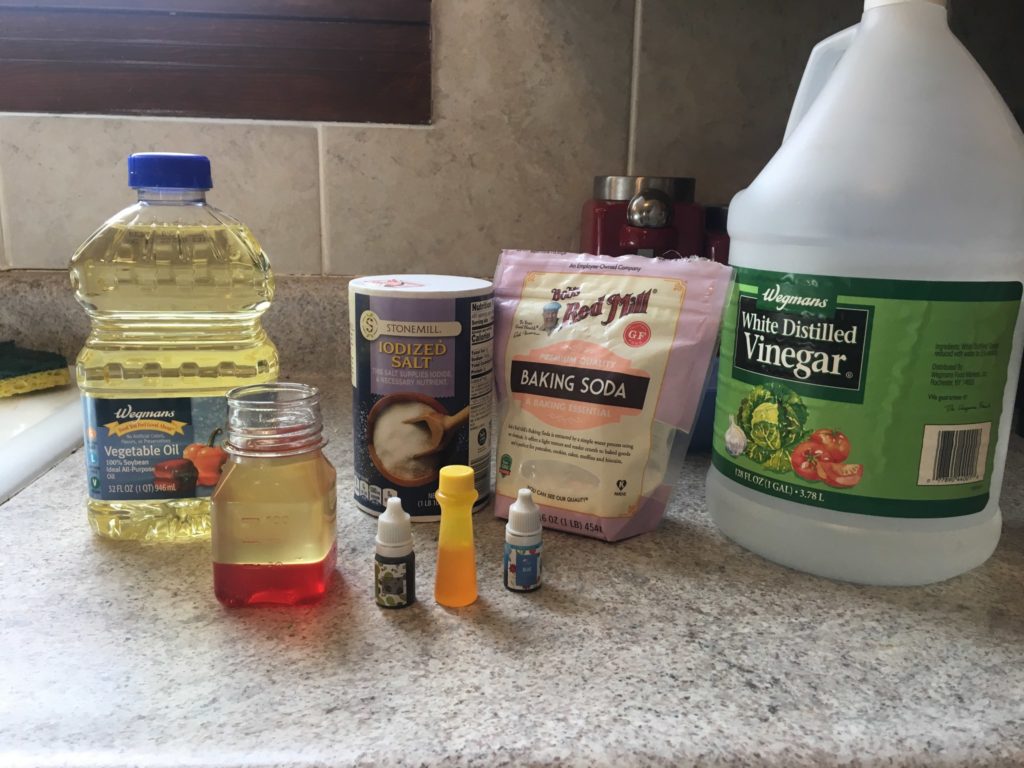Presented by National Grid
By Dan Walsh
STEM Educator and Cardboard Engineer Extraordinaire

Download a printable flyer here.
Supplies needed:
Small jar/cup
Vegetable oil
Water
Depending on what you have this experiment works with either Alka-Seltzer, salt, or baking soda and vinegar.

Length:
Build time: 5-10 minutes
Academic Subjects:
Science/ Engineering
This lesson supports the following standards:
3-5-ETS1-2
3-5-ETS1-3
3-PS2-1
3-PS2-2
4-PS3-2
4-PS3-3
4-PS3-4
5-PS2-1
Directions for Groovy Lava Lamps:
Alka-Seltzer Steps:
Step 1: Fill your jar about two-thirds of vegetable oil, then fill the rest with water. Once you pour the water in, have the student observe how the two react.
Science Fact: Since the oil is less dense than the water, the oil will sit on top. To take it a step further the water molecules are only attracted to water and oil with oil.
Step 2: Pick your favorite color of food dye. We only need a few drops depending on the size of your container. Have the student observe what happens when you add the food dye. The drops should bead up on the surface of the water and then fall through.
Step 3: Give the container a quick swirl with a spoon. Have the student predict what will happen when a tablet of Alka-Seltzer or salt is added.
Step 4: Then drop in a tablet of Alka-Seltzer into the mix. The reaction may take a second, but once it starts it’s an amazing show!
Salt Steps:
Repeat Steps 1 -3: Follow the steps above but instead of adding Alka-Seltzer we are going to add a teaspoon of salt. This reaction is a little slower than Alka-Seltzer, but still fun to watch. Once you mix the oil, water, and food dye add a pinch of salt. The reaction here is cool. The salt is heavier than both the water and oil. As the salt falls to the bottom of the glass it pulls oil down through the water. When the salt begins to dissolve the droplets of oil are released and float back to the top!
Baking soda and vinegar steps:
The measurements on this experiment depend on the size of your container.
First, we are going to put three tablespoons of baking soda in our container. (Use less if the container is small.) Pour about two-thirds of oil into the container. Do not mix the baking soda and oil!
In another container pour some vinegar into it. Add a few drops of your favorite color food dye into the vinegar. Then mix the food dye around to make sure the vinegar is the color you want it. Take a spoon and slowly add the vinegar into the oil container. Pour a little of the vinegar in at a time to make the experiment last longer. The baking soda is heavier than oil, so it sits at the bottom of the container. The vinegar is also heavier than the oil, as the vinegar is poured into the mixture it sinks through the oil and then reacts with the baking soda causing bubbles of carbon dioxide.
